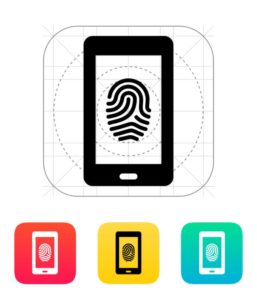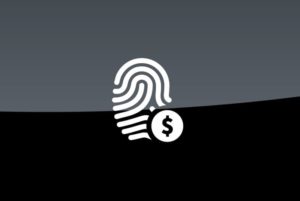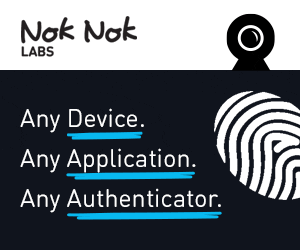Mobility and biometrics are quickly on their way to becoming synonymous. As high profile hack attacks continue to showcase the vulnerabilities in current password-based security systems the proliferation of biometric solutions is coming as a breath of relief, especially in a time when mobility is not just available but expected. Not only do biometric security measures protect against large scale cyber crime, they enable new levels of convenience that have long been promised by mobile technology in finance, enterprise, healthcare, consumer tech and more.
Throughout March, FindBiometrics will be examining the latest developments in this most exciting and dynamic area of identity technology as we enter phase two of the mobile biometric revolution.
Welcome to Mobile Biometrics Month 2016!
Mobile World Congress
 Perhaps nothing best exemplifies the momentum of the biometrics industry in the mobile space than last week’s Mobile World Congress 2016. This was the second year in a row that we reported from MWC in Barcelona, and the difference was stark in terms of the overall presence of biometrics. Both Visa and MasterCard were touting their embrace of biometrics, with the former having partnered with Morpho (Safran) to explore innovation in biometric finance and the latter showing off its multi-factor online payment verification app. Meanwhile, Sony unveiled exciting proof of concepts in biometric wearables and the show was filled to the brim with the who’s-who of biometrics vendors.
Perhaps nothing best exemplifies the momentum of the biometrics industry in the mobile space than last week’s Mobile World Congress 2016. This was the second year in a row that we reported from MWC in Barcelona, and the difference was stark in terms of the overall presence of biometrics. Both Visa and MasterCard were touting their embrace of biometrics, with the former having partnered with Morpho (Safran) to explore innovation in biometric finance and the latter showing off its multi-factor online payment verification app. Meanwhile, Sony unveiled exciting proof of concepts in biometric wearables and the show was filled to the brim with the who’s-who of biometrics vendors.
For a snapshot of mobile biometrics landscape right now, take a look at the links below detailing just some of the interesting items that came out of MWC last week.
GALLERY: Looking Back on Mobile World Congress 2016
MWC 2016: Visa Isn’t Picking Favorites When it Comes to Biometrics
Taking MasterCard Identity Check For a Test Drive
Galaxy S7 Models Unveiled in Barcelona, To Launch in March
Morpho and Visa Team to Deliver Innovation in Payments
Sony’s Xperia Line Hints at IoT Future
Egis Brings Smorgasbord of Authentication Tech to MWC16
IriTech and Heptagon Team For Mobile Iris Biometrics Solution
NEXT Partners with Arrow to Offer Turnkey IoT Biometrics
FPC, Zwipe Announce Strategic Partnership in Biometric Smart Cards
How Mobile Fingerprints Went Mainstream
 Mobile biometrics haven’t always been so pervasive. For a very long time, the potential of biometric authentication and identification on mobile devices was confined to market predictions, pilot projects and proofs of concept. It wasn’t until Touch ID was announced in 2013, with the introduction of the Apple iPhone 5S, that the ball really started to roll. Of course, the 5S wasn’t the first smartphone to sport a fingerprint sensor, and in its initial iteration it was both spoofable and without much use. Still, if consumers in the Cult of Jobs wanted to stay up to date they were going to need to buy a fingerprint sensor phone. So they did.
Mobile biometrics haven’t always been so pervasive. For a very long time, the potential of biometric authentication and identification on mobile devices was confined to market predictions, pilot projects and proofs of concept. It wasn’t until Touch ID was announced in 2013, with the introduction of the Apple iPhone 5S, that the ball really started to roll. Of course, the 5S wasn’t the first smartphone to sport a fingerprint sensor, and in its initial iteration it was both spoofable and without much use. Still, if consumers in the Cult of Jobs wanted to stay up to date they were going to need to buy a fingerprint sensor phone. So they did.
Shortly thereafter, at Mobile World Congress 2014, Samsung followed suit with a fingerprint sensor on the Galaxy 5S handset, which was immediately endorsed by PayPal as an approved method of payment authentication. Since then, OEMs have followed in the footsteps of Samsung and Apple, embedding fingerprint sensors into their own handsets and looking beyond the finger for other methods of user authentication. Driven by user convenience, mobile biometric acceptance started with that 2013 iPhone model and has taken the world by storm. Biometrics are now standard issue on new phones, and the mobile experience is better for it.
Touch ID: Apple’s iPhone 5S Fingerprint Biometrics Announcement
iPhone Biometrics Spoofed Again, Expert Still Loves Touch ID
Could Touchscreen Touch ID Be On Its Way?
iPhone 6S Plus Touch ID Analyzed in New Report
Samsung Galaxy S5 Fingerprint And Vital Biometrics Confirmed With Official Announcement
Samsung Announces Second Biometric Smartphone
NEXT Biometrics Sales Benefit From The Apple Effect
Nok Nok Labs Announces Support for Apple’s Biometric Security
FPC’s Was 2015’s Best-Performing Stock in Europe
The Multimodal Smartphone Future
 As alluded to in the last section, fingerprints are only one piece of a much larger picture when it comes to mobile biometrics. Face and voice recognition are prominent biometric modalities in the mobile space thanks to one simple fact: smartphones are built to support them. A front facing camera and a microphone have long been standard issue on mobile devices, so for voice or face to be implemented, all you need is the software.
As alluded to in the last section, fingerprints are only one piece of a much larger picture when it comes to mobile biometrics. Face and voice recognition are prominent biometric modalities in the mobile space thanks to one simple fact: smartphones are built to support them. A front facing camera and a microphone have long been standard issue on mobile devices, so for voice or face to be implemented, all you need is the software.
Furthermore, iris has now become a viable option on mobile. Once just a persistent rumor, iris biometric ID on a smartphone became a reality last year with the launch of the Fujitsu Arrows NX F-04G phone though NTT DoCoMo in Japan. Delta ID, an iris biometrics company, played an integral role in bringing iris to the smartphone, providing the tech used in the Arrows phones (the Arrows NX F-04G was followed by a second model, the NW F-02H). Pushing smartphone iris beyond the status of niche or novelty are the latest Lumia Windows phones which feature the modality thanks to the Windows 10 OS they run on.
The future of mobile biometrics is multimodal, and said modalities are constantly diversifying. Here’s a look at some of the biometrics that go beyond the tip of your finger:
Smartphone’s Iris Scanner Powered By Delta ID
News Roundup: DOCOMO and FIDO Break the Password
Lumia Users Enthusiastic About Iris Biometrics
LeTV Max Pro To Feature Multimodal Biometrics
Sensory CEO Todd Mozer on TrulySecure 2.0
Sensory Inc. and Nok Nok Labs to Deliver FIDO-Ready Face and Voice Recognition
FinTech
 A massive driving factor in consumer adoption of biometrics has been the mobile wallet. Samsung Pay and Apple Pay both allow for users around the world to pay for retail products and services with a tap of their smartphones, all the while requiring the use of the phone’s fingerprint sensor. But mobile FinTech isn’t just about low risk payments. Banks and credit unions are also looking to biometrics to make their mobile experience more appealing, convenient and secure.
A massive driving factor in consumer adoption of biometrics has been the mobile wallet. Samsung Pay and Apple Pay both allow for users around the world to pay for retail products and services with a tap of their smartphones, all the while requiring the use of the phone’s fingerprint sensor. But mobile FinTech isn’t just about low risk payments. Banks and credit unions are also looking to biometrics to make their mobile experience more appealing, convenient and secure.
With biometric technology readily available on smartphones, many banking apps simply need to roll out an update supporting a certain modality. This is commonly seen with Touch ID integrations on banking apps, and we have also seen software based modalities rolled out as well. The USAA banking app, for instance, supports fingerprint, face and voice which can be used and combined as per a user’s preference. Indeed, it’s this sort of accessible user experience that seems to give us a glimpse into the future of biometric FinTech.
At MWC last week Visa’s Mark Nelsen remarked during a presentation of biometrics that it will be up to the user to decide which modality becomes the dominant one. We’re already seeing this play out with a wider set of authentication options becoming available for transaction authentication on a regular basis.
Here’s a look at how mobility and biometrics are changing FinTech for the better:
Samsung Pay Passes 5,000,000-User Mark
Apple Pay, MasterCard Revive Free Ride Promotion with Transit for London
MasterCard’s Selfie Based Authentication To Launch in Summer
ImageWare Brings Biometrics to Online Auctions
Daon Highlights Success of Biometrics in USAA Mobile App
Korean Bank Introduces FIDO Certified Biometric Authentication on Mobile App
Deutsche Bank Trials Multimodal Mobile System
Enterprise and Healthcare: Beyond The Mobile Wallet
 While FinTech is the most active and mainstream biometric use case in mobility, the other verticals are all being transformed by the promises of the mobile revolution in strong authentication. As we saw in Healthcare Month 2016, electronic health records (EHR) and remote care solutions are improving hospitals and clinics. Meanwhile, in the enterprise, there is a great deal of potential in BYOD if currently available mobile device management solutions are properly implemented so that employees can access more than just their email via their smartphones.
While FinTech is the most active and mainstream biometric use case in mobility, the other verticals are all being transformed by the promises of the mobile revolution in strong authentication. As we saw in Healthcare Month 2016, electronic health records (EHR) and remote care solutions are improving hospitals and clinics. Meanwhile, in the enterprise, there is a great deal of potential in BYOD if currently available mobile device management solutions are properly implemented so that employees can access more than just their email via their smartphones.
Of course law enforcement and border control are also made much more efficient with the use of mobile biometric solutions, as are emergency response operations. Even government e-Services can benefit from mobile biometric innovations, though we are only beginning to see such initiatives come to fruition. The key with mobile biometrics is to look beyond the popular use cases in the consumer market and see it as a philosophy: mobility promises efficiency, but carries a greater risk; additional risk can be mitigated by ensuring the identity of the user is trusted and verified. Convenience necessitates assurance, and biometrics are perfect for that job.
Here are some recent examples of mobile biometrics in the vertical markets:
ImageWare to Showcase GoVerifyID in AirWatch EMM
RSA Via Goes Beyond ‘One Size Fits All’ Authentication, Balances Security and Convenience
Healthcare Month 2016: Biometric Healthcare in the Home
Healthcare Month 2016: The Primer
Cross Match Technologies Releases New Mobile Credential and Biometric Reader
Mobile Biometrics Aid in AirAsia Crash Victim Identification
Physical Access Month: The Mobility Effect
Internet of Things
 Mobility isn’t just smartphones anymore—not when it comes to biometrics. Innovations in connectivity have enabled a machine-to-machine (M2M) network that links physical objects—appliances, lights, vehicles, accessories and, well, things. While it’s not terribly new (the concept has been discussed for decades), the Internet of Things is growing in scope and importance, and as it does experts are becoming increasingly concerned about its security. Biometrics are part of the puzzle in locking down the IoT so that our baby cams, smart cars and industrial facilities are safe from hack attacks.
Mobility isn’t just smartphones anymore—not when it comes to biometrics. Innovations in connectivity have enabled a machine-to-machine (M2M) network that links physical objects—appliances, lights, vehicles, accessories and, well, things. While it’s not terribly new (the concept has been discussed for decades), the Internet of Things is growing in scope and importance, and as it does experts are becoming increasingly concerned about its security. Biometrics are part of the puzzle in locking down the IoT so that our baby cams, smart cars and industrial facilities are safe from hack attacks.
The following links will give you an idea of what kinds of biometric innovation we’re seeing in this regard and why there is such a need for strong authentication in this newer Internet.
Internet of Things Poses Serious Threat to Privacy
Consensus Grows on Need for Biometric Security in Internet of Things
NEXT Biometrics, Arrow Electronics Offer Authentication Solution for Windows 10 IoT Devices
Interview with Yves Portalier from Morpho (Safran)
Trustonic Hybrid Protection Enhances IoT Fingerprint Security
Shodan Highlights Demand For IoT Authentication
Qualcomm Demos Smart Home Platform, Voice Biometics
Entertech Sees Biometric Opportunity in IoT
*
Stay posted to FindBiometrics throughout March as we continue to examine mobile biometrics in our featured articles section. Be sure to follow us on Twitter so you don’t miss a beat.
Mobile Biometrics Month 2016 is made possible by our sponsors: Daon, ImageWare Systems, Inc., and Nok Nok Labs.
—
March 3, 2016 – by Peter B. Counter



Follow Us